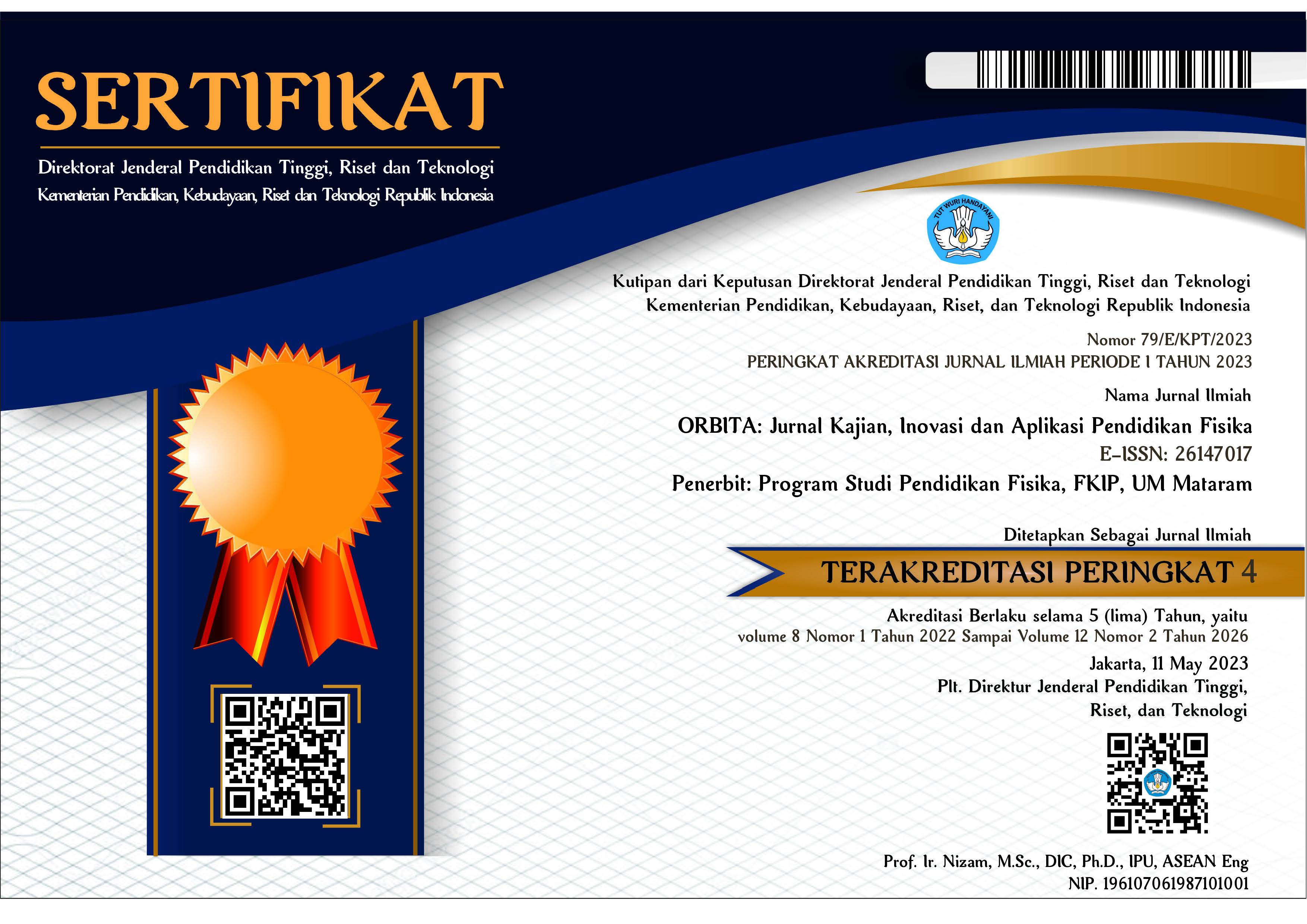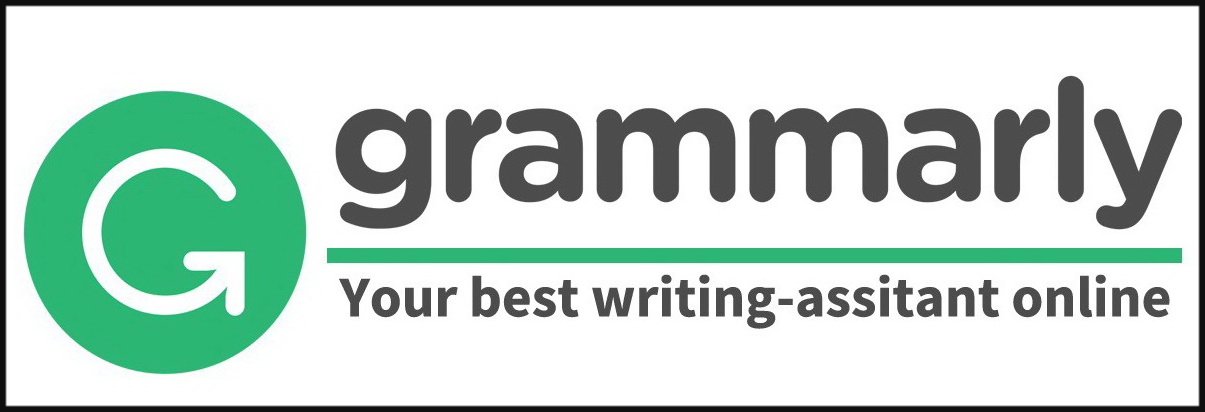Development of physics learning modules in supporting the implementation of digitalization education wave material based on Augmented Reality (AR) and Physics Education Technology (PhET)
Abstract
The era of the industrial revolution 4.0 and 5.0 is the era of digitalization, the era in which the man who drives the development of the country's economy has been slowly replaced by mechanical automation and digitization of technology. The role of science and technology is necessary for the success of the digitalized era of education. Technology-based modules are essential to digitizing education and avoiding loos learning. The technology that can be used to digitize education is using three-dimensional images using augmented reality technology integrated using PhET (Physic Education Technology). The research aims to implement Augmented Reality (AR) and Physics Education Technology (PhET) in the development of physical modules for enterprise materials and renewable energy. This module will be about materials and renewable energy which contains barcodes that when scanned using a student's smartphone, then will appear a real three-dimensional picture. While business practicums and renewable energy will emerge in the form of links that will later be connected to PhET and students can simulate experiments on energy change, enterprise and renewed energy. The research method uses the ADDIE development model, namely analysis, design, development, implementation and evaluation. The research was carried out at Kesatrian 2 Semarang High School involving 50 students and 2 specialists. PhET-based and Augmented Reality learning modules applied to the experimental class can help students to improve their problem-solving skills. an evaluation of the applications already implemented in the school, which assessed the effectiveness of the use of AR and PhET learning modules on vibrational and wave material. Effectiveness can be reviewed from the response of students who have used the reviewed module from the level of comprehension of the material. The effectiveness score reaches 83%, which means that the module is developed effectively to support the process of learning activities in the classroom.
Keywords
Full Text:
PDFReferences
Agustine, Dwi, Ketang Wiyono, и M Muslim. 2014. „Pengembangan e-learning berbantuan virtual laboratory untuk mata kuliah praktikum fisika dasar ii di program studi pendidikan fisika fkip unsri“. Jurnal Inovasi dan Pembelajaran Fisika 1(1): 33–43.
Gunawan, Gunawan, Ahmad Harjono, и Hairunnisyah Sahidu. 2017. „Studi Pendahuluan Pada Upaya Pengembangan Laboratorium Virtual bagi Calon Guru Fisika“. Jurnal Pendidikan Fisika dan Teknologi 1(2): 140.
Hartono, Robert, Liliana Liliana, Yulia Yulia, и Kustiadi Basuki. 2019. „Pembuatan Aplikasi Augmented Reality Pembelajaran hewan“. ISSN 2502-3632 (Online) ISSN 2356-0304 (Paper) Jurnal Online Internasional & Nasional Vol. 7 No.1, Januari – Juni 2019 Universitas 17 Agustus 1945 Jakarta 4(2): 1689–99. www.journal.uta45jakarta.ac.id.
Herman, Nadya Putri, Hidayati Hidayati, Renol Afrizon, и Rahmat Hidayat. 2023. „Analisis Kebutuhan Terhadap Media Pembelajaran Berbasis Ict (Information and Communication Technology)“. ORBITA: Jurnal Pendidikan dan Ilmu Fisika 9(1): 133.
Inayah, Sarah и съавт. 2022. „Sosialisasi Penggunaan Teknologi Virtual Reality dan Augmented Reality dalam Pembelajaran untuk Menyongsong Era Metaverse“. Jurnal Pengabdian Kepada Masyarakat Abdi Nusa 2(3): 134–40.
Kadir, Ahmad Ridwan, и Fakultas Tarbiyahdan Keguruan. 2014. „Laboratorium Riil Dengan Laboratorium Virtual“.
McComas, William F. 2014. „Programme for International Student Assessment (PISA)“. The Language of Science Education: 79–79.
Rachmi, Hilda и съавт. 2022. „Pengenalan dan Pelatihan Augmented Reality untuk Pemberdayaan Masyarakat Digital pada Komunitas Bogor Mengabdi Augmented Reality untuk anggota Komunitas Bogor Mengabdi masih minim , salah satunya faktornya adalah karena belum banyaknya tenaga pengajar dis“. 3(3): 201–9.
Riska Dewi, Laily, И Mita Anggaryani. 2020. „Pembuatan Media Pembelajaran Fisika Dengan Augmented Reality Berbasis Android Pada Materi Alat Optik“. IPF: Inovasi Pendidikan Fisika 9(3): 369–76.
Rizaludin, Muhamad и съавт. 2022. „JAM-TEKNO“. 3(2): 77–83.
Sadikin, Ali, и Afreni Hamidah. 2020. „Pembelajaran Daring di Tengah Wabah Covid-19“. Biodik 6(2): 109–19.
Siahaan, Aris Dermawan, Rosane Medriati, и Eko Risdianto. 2019. „Menggunakan Teknologi Augmented Reality Pada Materi“. Jurnal Kumparan Fisika 2(2): 91–98.
Subiki, Subiki и съавт. 2022. „Pengaruh Media Pembelajaran Phet Simulation Terhadap Hasil Belajar Siswa Sma Negeri Plus Sukowono Materi Usaha Dan Energi Tahun Pelajaran 2021/2022“. ORBITA: Jurnal Pendidikan dan Ilmu Fisika 8(2): 200.
Sumardani, Dadan. 2020. „Informatika : Fakultas Sains dan Teknologi“. Jurnal fakultas Sains dan Teknologi Universitas Labuhanbatu 8(1): 10–18.
Zainudin, Zainudin. 2017. „Pengembangan E-Learning Fisika Menggunakan Phet (Physics Educational Technology) Pada Materi Pokok Dinamika Gerak Lurus Berbasis Keterampilan Berfikir Kritis“. Jurnal Pena Sains 4(1): 22.
DOI: https://doi.org/10.31764/orbita.v10i1.21748
Refbacks
- There are currently no refbacks.

This work is licensed under a Creative Commons Attribution-ShareAlike 4.0 International License.
______________________________________________________
ORBITA: Jurnal Pendidikan dan Ilmu Fisika
p-ISSN 2460-9587 || e-ISSN 2614-7017
This work is licensed under a Creative Commons Attribution-ShareAlike 4.0 International License.
EDITORIAL OFFICE:


























